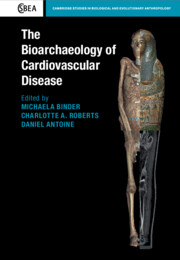118 results
A CBT-based training module for UK health visitors who support parents with excessively crying babies: development and initial evaluation
-
- Journal:
- Primary Health Care Research & Development / Volume 25 / 2024
- Published online by Cambridge University Press:
- 19 April 2024, e20
-
- Article
-
- You have access
- Open access
- HTML
- Export citation
Hugh Liebert. Gibbon's Christianity: Religion, Reason, and the Fall of Rome University Park: Pennsylvania State University Press, 2022. Pp. 196. $104.95 (cloth).
-
- Journal:
- Journal of British Studies , First View
- Published online by Cambridge University Press:
- 18 March 2024, pp. 1-2
-
- Article
- Export citation
Rethinking Transnational Activism through Regional Perspectives: Reflections, Literatures and Cases
-
- Journal:
- Transactions of the Royal Historical Society , First View
- Published online by Cambridge University Press:
- 08 January 2024, pp. 1-27
-
- Article
-
- You have access
- Open access
- HTML
- Export citation
Copyright page
-
- Book:
- The Bioarchaeology of Cardiovascular Disease
- Published online:
- 31 March 2023
- Print publication:
- 20 April 2023, pp vi-vi
-
- Chapter
- Export citation
12 - ‘Absence of Evidence Is Not Evidence of Absence’
- from Part II - Cardiovascular Diseases Associated with Human Skeletal Remains
-
-
- Book:
- The Bioarchaeology of Cardiovascular Disease
- Published online:
- 31 March 2023
- Print publication:
- 20 April 2023, pp 214-226
-
- Chapter
- Export citation
Part III - Contemporary Perspectives
-
- Book:
- The Bioarchaeology of Cardiovascular Disease
- Published online:
- 31 March 2023
- Print publication:
- 20 April 2023, pp 227-262
-
- Chapter
- Export citation
Part II - Cardiovascular Diseases Associated with Human Skeletal Remains
-
- Book:
- The Bioarchaeology of Cardiovascular Disease
- Published online:
- 31 March 2023
- Print publication:
- 20 April 2023, pp 145-226
-
- Chapter
- Export citation
Part I - Evidence from Mummified Tissues
-
- Book:
- The Bioarchaeology of Cardiovascular Disease
- Published online:
- 31 March 2023
- Print publication:
- 20 April 2023, pp 39-144
-
- Chapter
- Export citation
Index
-
- Book:
- The Bioarchaeology of Cardiovascular Disease
- Published online:
- 31 March 2023
- Print publication:
- 20 April 2023, pp 263-266
-
- Chapter
- Export citation
8 - Calcified Structures as Potential Evidence of Atherosclerosis Associated with Human Skeletal Remains from Amara West, Nubia (1300–800 BCE)
- from Part II - Cardiovascular Diseases Associated with Human Skeletal Remains
-
-
- Book:
- The Bioarchaeology of Cardiovascular Disease
- Published online:
- 31 March 2023
- Print publication:
- 20 April 2023, pp 147-163
-
- Chapter
- Export citation
2 - Exploring the Sources of Indirect Evidence for Cardiovascular Disease in Bioarchaeology
-
-
- Book:
- The Bioarchaeology of Cardiovascular Disease
- Published online:
- 31 March 2023
- Print publication:
- 20 April 2023, pp 7-38
-
- Chapter
- Export citation
Contents
-
- Book:
- The Bioarchaeology of Cardiovascular Disease
- Published online:
- 31 March 2023
- Print publication:
- 20 April 2023, pp ix-x
-
- Chapter
- Export citation
Contributors
-
- Book:
- The Bioarchaeology of Cardiovascular Disease
- Published online:
- 31 March 2023
- Print publication:
- 20 April 2023, pp xi-xiv
-
- Chapter
- Export citation
15 - Reflections on Cardiovascular Disease
- from Part III - Contemporary Perspectives
-
-
- Book:
- The Bioarchaeology of Cardiovascular Disease
- Published online:
- 31 March 2023
- Print publication:
- 20 April 2023, pp 258-262
-
- Chapter
- Export citation
Foreword
-
- Book:
- The Bioarchaeology of Cardiovascular Disease
- Published online:
- 31 March 2023
- Print publication:
- 20 April 2023, pp xv-xvii
-
- Chapter
- Export citation
Dedication
-
- Book:
- The Bioarchaeology of Cardiovascular Disease
- Published online:
- 31 March 2023
- Print publication:
- 20 April 2023, pp vii-viii
-
- Chapter
- Export citation
Acknowledgements
-
- Book:
- The Bioarchaeology of Cardiovascular Disease
- Published online:
- 31 March 2023
- Print publication:
- 20 April 2023, pp xviii-xviii
-
- Chapter
- Export citation

The Bioarchaeology of Cardiovascular Disease
-
- Published online:
- 31 March 2023
- Print publication:
- 20 April 2023
A novel algorithm for classification of interatrial communications within the oval fossa in the newborn: Results from the Copenhagen Baby Heart Study
-
- Journal:
- Cardiology in the Young / Volume 33 / Issue 10 / October 2023
- Published online by Cambridge University Press:
- 21 November 2022, pp. 1942-1949
-
- Article
-
- You have access
- Open access
- HTML
- Export citation
Virtual reality (VR) therapy for patients with psychosis: satisfaction and side effects
-
- Journal:
- Psychological Medicine / Volume 53 / Issue 10 / July 2023
- Published online by Cambridge University Press:
- 28 April 2022, pp. 4373-4384
-
- Article
-
- You have access
- Open access
- HTML
- Export citation



